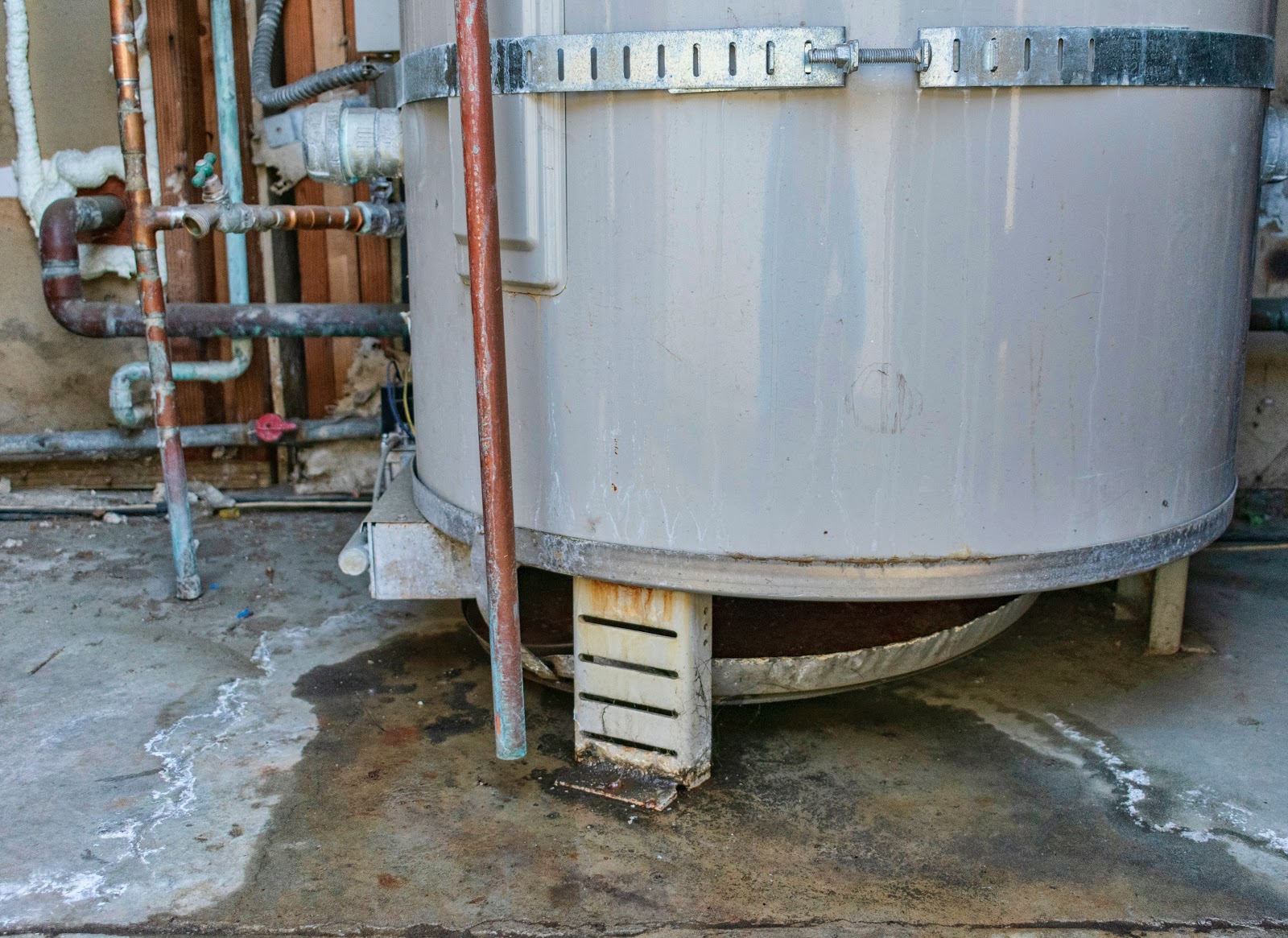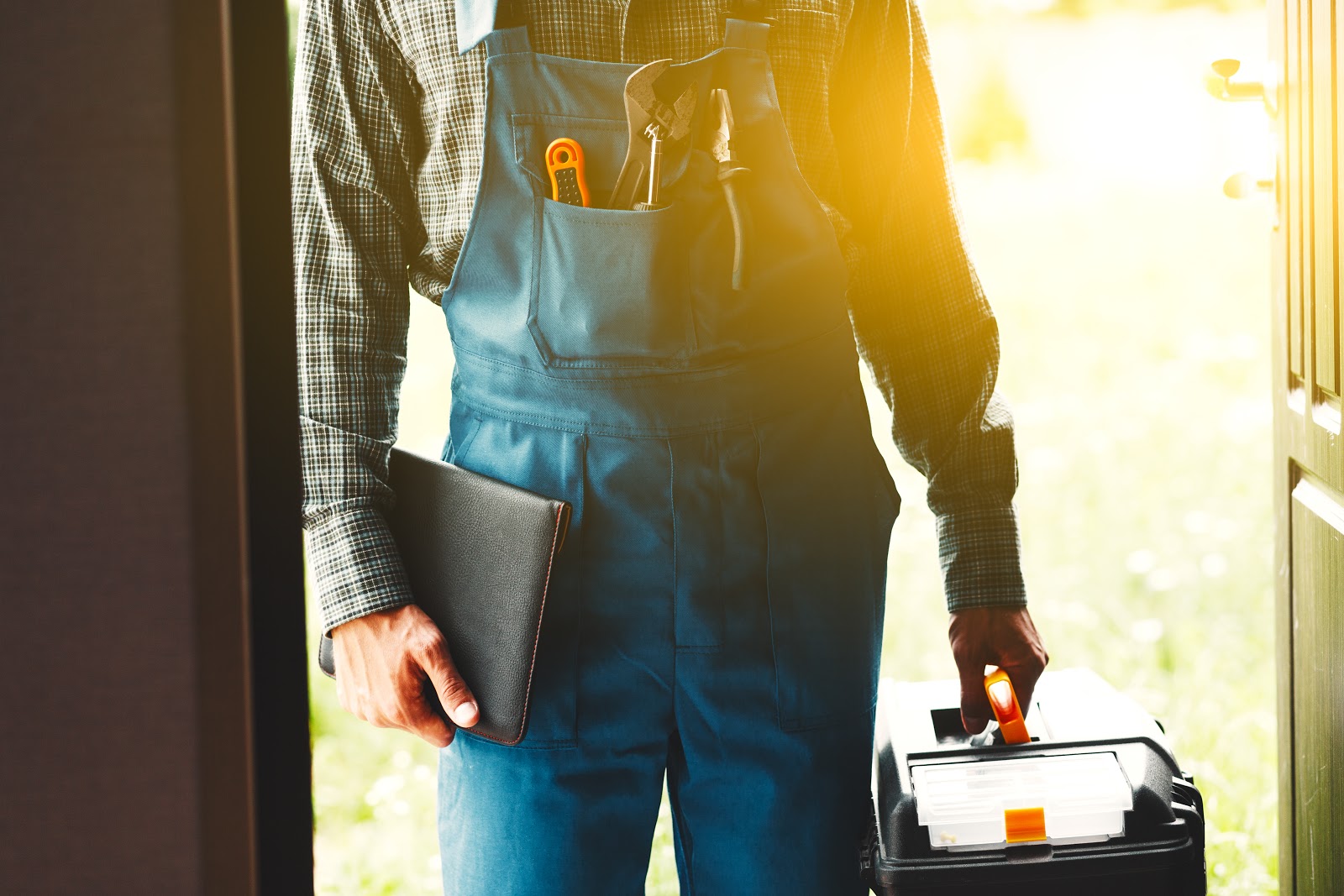If you’ve had the unfortunate experience of walking by your utility closet and ending up with a pair of soaking wet socks, odds are you know what it’s like to deal with a leaking water heater. As is the case with any leaking appliances or fixtures in your home, it’s important that you act fast to resolve the issue. Read on to find out what steps you need to take to minimize damage and deal with your leaking water heater.
1. Turn off the Water & Power or Gas Supply
If you suspect that your water heater is leaking, the first thing you want to do is turn off your water and power supply. These steps will minimize the possibility of further flooding (and water damage), and more importantly, make it less likely that the water will damage any other important fixtures in its vicinity.
The easiest way to slow down the leak is to turn off the water supply to your water heater. This can either be done directly with the cold water shut-off valve or by stopping water flow to your home entirely. If you are able to reach the cold water shut-off without coming into contact with the water, use the cold water supply valve to stop your heater’s water supply. Your valve will either look like a wheel or a handle. If your valve looks like a wheel, turn clockwise as far as possible to shut it off. If your valve looks like a handle, rotate it 180 degrees.
However, if your leak is severe or you can’t access the valve, you should turn off your home’s main water supply. If you aren’t sure where your main water valve is located, connect with a professional as soon as possible.
Once you’ve stopped the flow of water into your unit, you’ll want to turn off the unit’s power or gas. If you have an electric water heater, flip off the breaker before taking any other steps. If you have a gas water heater, shut off the gas valve. When the water has stopped flowing into your unit and its power has been switched off, you’re ready to safely investigate the issue further.
2. Determine Where the Leak is Coming From

Before calling in a pro, you’ll want to be certain that it is your water heater that’s leaking. Dampness can be a result of a leaky roof or even condensation. Inspect the area around your water heater and do your best to determine where exactly the excess water is coming from. If you can’t be sure of the source, don’t worry, a pro will have no issue identifying the problem area and determine the right solution.
3. Troubleshoot & Call a Pro

Once you’re sure that it’s your water heater that’s leaking, it’s time to try and do some troubleshooting. Any information you can gather regarding the source of your issue will make the repair process significantly smoother. Here are the most common issues that can lead to a leak in your water heater.
Cold Water Inlet & Hot Water Outlet
If you’re lucky, you may just be dealing with some loose inlet or output pipes. These pipes are responsible for drawing cool water into your heater and circulating warm water throughout your home. If you notice a leak at these connection points, you can simply tighten the valves using a wrench.
Loose Drain Valve
If you suspect that the leak is coming from the bottom of the tank, it could be a result of a loose drain valve. The drain valve should be completely closed with no signs of moisture around it. If it’s leaking, it’s likely due to a loose washer inside. Although you’ll most likely need the help of a pro to replace this piece, it should be a relatively quick fix.
Too Much Pressure
Every unit will come with a temperature and pressure relief valve (T/P valve). This valve (and the attached pipe) will be located on either the top or side of the pipe. The T/P valve monitors both internal water temperature and water pressure. When there’s too much pressure inside the tank, it will automatically release water to relieve pressure and prevent the tank from exploding. Check out the point where the valve connects with the tank and ensure it isn’t leaking.
If there’s no sign of a leak, determine whether the valve is in the open or closed position. If it’s closed but you notice water is still moving through the attached pipe, the valve will likely need replacing. On the other hand, if the valve is open and your heater is set within a normal temperature range (120 to 140 degrees Fahrenheit), it may be releasing too much pressure from the tank. In either instance, you’ll need the help of a pro to resolve the issue.
Cracked Storage Tank
Unfortunately, one of the most common causes of water heater leaks is a crack in the inner storage tank. In these cases, water will be leaking from the bottom of your unit. The bad news is that you will need to replace your unit if your inner tank is cracked. The good news is that this is often a result of wear and tear over the years, so it’s likely your unit was due for an update regardless.
While a leak can seem insignificant, even the smallest amount of excess moisture in the home can lead to rot, mold, and electrical damage. If you suspect your unit is damaged, act fast. With the help of a HomeStars pro, the issue will be resolved in no time at all and with minimal damage to other areas of your home.
